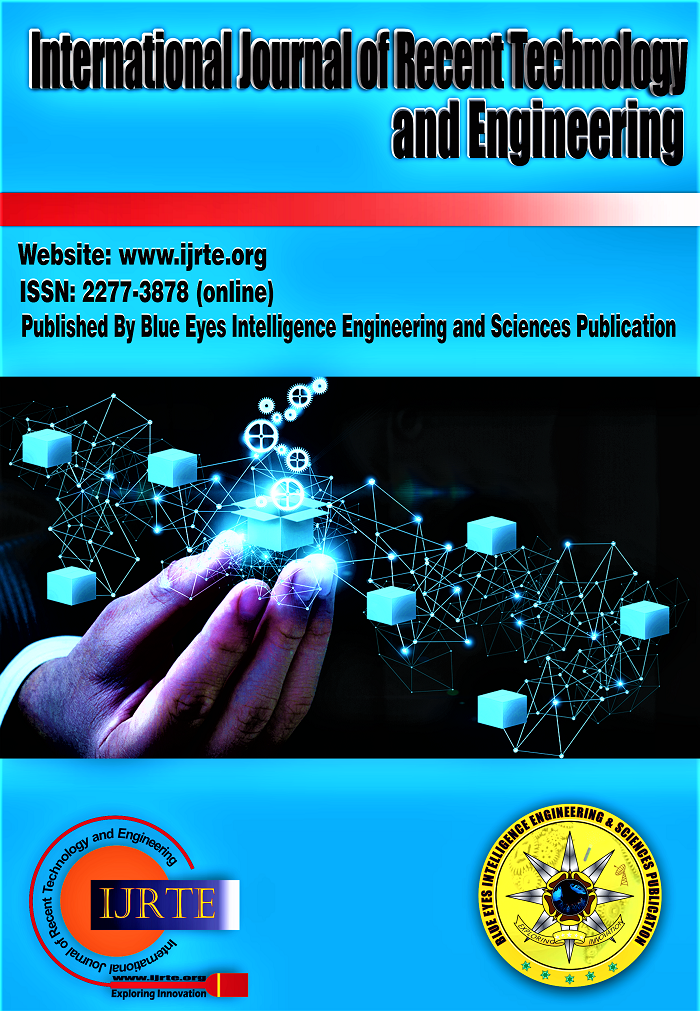AI Curriculum Design for Korea K-12 AI Education Through Analyzing AI Education Curriculum
Main Article Content
Abstract
This paper deals with the curriculum design of Korean K-12 AI education. AI is the core technology of 4th wave and it is impact is wide and strong. Therefore, every country has s strong nurture system for AI manpower. However, there are few materials about curriculum design and operation experience documentation because AI was an interest since 2016, and its education is very new. In Korea, they started a program for teacher manpower education in 2020. Therefore, there is no manpower that had an experience in the design and operation of the K-12 AI curriculum. The AI curriculum is a core parameter for AI manpower. So, AI-advanced countries try to develop AI education methods. This paper analyzes the K-12 AI curriculum of the advanced countries, and then designs and suggests Korea’s K-12 AI curriculum.
Downloads
Article Details
Section

This work is licensed under a Creative Commons Attribution-NonCommercial-NoDerivatives 4.0 International License.
How to Cite
References
Brady D. Lund , “A Brief Review of ChatGPT: Its Value and the Underlying GPT Technology,” University of North Texas. DOI:10.13140/RG.2.2.28474.06087, 2023.
Brady D. Lund and Ting Wang, “Chatting about ChatGPT: How may AI and GPT impact academia and libraries?,” DOI: 10.1108/LHTN-01-2023-0009, 2023. https://doi.org/10.1108/LHTN-01-2023-0009
https://www.wired.com/2016/03/sadness-beauty-watching-googles-ai-play-go/
I. A. Zadeh, “Fuzzy set,” Information and control 8, 338-353, 1965. https://doi.org/10.1016/S0019-9958(65)90241-X
James McCaffrey, “AI-PSO Microsoft,” Vol. 26, No. 8, 2021, https://learn.microsoft.com/en-us/archive/msdn-magazine/2011/august/artificial-intelligence-particle-swarm-optimization
Huang Chen et al. “Bacterial Foraging Optimization Based on Self-Adaptive Chemotaxis Strategy,” Computational Intelligence and Neuroscience, pp. 1-15, 2020. https://www.hindawi.com/journals/cin/2020/2630104/ https://doi.org/10.1155/2020/2630104
Jerome H. Carter, “The Immune System as a Model for Pattern Recognition and Classification,” J Am Med Inform Assoc., Vol. 7, No. 1, pp. 28-41.doi: 10.1136/jamia.2000.0070028, 2020. https://doi.org/10.1136/jamia.2000.0070028
A. de Callatay, “Natural and artificial intelligence,” Elsevier, https://www.elsevier.com/books/natural-and-artificial-intelligence/de-callatay/978-0-444-89081-8,1992.
Digital promise, https://digitalpromise.org/initiative/computational-thinking/computational-thinking-for-next-generation-science/what-is-computational-thinking/, 2023.
Teach your kids code (2023). https://teachyourkidscode.com/what-is-computational-thinking/
University of york (2023). https://online.york.ac.uk/what-is-computational-thinking/
Jeannette M. Wing (2006). Computational thinking. Communication of the ACM, 49(3), 33-35, 2006. https://doi.org/10.1145/1118178.1118215
Weipeng Yang, “AI education for young children: Why, What, How in curriculum design and implementation,” Computer and education: AI, 3. https://www.sciencedirect.com/science/article/pii/S2666920X22000169?via%3Dihub
Allison Slater Tate, “How will AI like ChatGPT change education for our children,“https://www.parents.com/how-will-ai-technology-change-education-7100688, 2023.
UNICEF, “Policy guideance on AI for children,” 2021. https://www.unicef.org/globalinsight/media/2356/file/UNICEF-Global-Insight-policy-guidance-AI-children-2.0-2021.pdf
Eungkyoung Lee, “Comparative Analysis of Contents Related to Artificial,” Intelligence in National and International K-12 Curriculum. The Korean Association of Computer Education, Vol. 25, No. 1, pp. 1-16, 2020. https://doi.org/10.32431/kace.2022.25.1.001
Soonhwan Kim et al. “Review on Artificial Intelligence Education for K-12 Students and Teachers,” The Korean Association of Computer Education, Vol. 23, No. 4, PP. 1-11. https://doi.org/10.32431/kace.2020.23.4.001, 2020.
Yeonju et al. “Development and Application of Modular Artificial Intelligence Ethics Education Program for Elementary and Middle School students,” The Korean Association of Computer Education, , Vol. 25, No. 5, PP. 1-14. https://doi.org/10.32431/kace.2022.25.5.001, 2022.
Seulki Kim et el. “A Study on Educational Dataset Standards for K-12 Artificial Intelligence Education,” The Korean Association of Computer Education, Vol.25, No. 1, PP. 29-40. https://doi.org/10.32431/kace.2022.25.2.003, 2022.
Melissa, “Learning for the Digital World: A Pan-Canadian K-12 Computer Science Education Framework,” Frame work Advisory Group and Engagement and Development Team, PP. 1-53, 2019.
https://www.zdnet.com/article/ai-arms-race-this-global-index-ranks-which-nations-are-dominating-ai-development/ https://www.tortoisemedia.com/intelligence/global-ai/
Xiaoting (Maya) Liu, “Nurturing the Next-Generation AI Workforce: A Snapshot of AI Education in China's Public Education System,” Asia Pacific foundation of Canada, PP. 1-14. https://www.asiapacific.ca/publication/nurturing-next-generation-ai-workforce-snapshot-ai-education, 2022.
Xiaoyan Gong, “AI Educational System for Primary and Secondary Schools. American Society for Engineering Education,” 126th Annual conference, 2019.
Jiahong Su et al. “A meta-review of literature on educational approaches for teaching AI at the K-12 levels in the Asia-Pacific region. Computers and Education,” Artificial Intelligence, 3, https://doi.org/10.1016/j.caeai.2022.100065, 2022. https://doi.org/10.1016/j.caeai.2022.100065
Chung-Ang University, “AI education for K-12 in Canada and S. Korea,” PP. 1-24, 2021 https://www.reportlinker.com/p05478480/Global-Artificial-Intelligence-AI-Industry.html?utm_source=PRN.
K12 Computer science framework, “The K-12 Computer Science Framework, led by the Association for Computing Machinery, Code.org,” Computer Science, 2016.
UNESCO 2021, “AI and education”, https://creativecommons.org/licenses/by-sa/3.0/igo/
K-12 AI curricula, ED-2022/FLI-ICT/K-12, 2022. https://blog.fetc.org/k-12-educators-guide-to-using-artificial-intelligence/
Artificial Intelligence (AI) education for K-12 Schools, STEM Kit Review (2022). https://stemkitreview.com/artificial-intelligence-ai-education-for-k-12-schools/
https://appinventor.mit.edu/explore/ai-with-mit-app-inventor
Pati Ruiz, “Artificial Intelligence in Education: A Reading Guide Focused on Promoting Equity and Accountability in AI,” 2022. https://circls.org/educatorcircls/ai-in-education/ai-in-ed-reading-guide
Machine learning for Kid. https://machinelearningforkids.co.uk
Why Choose to Include Artificial Intelligence Course in K-12 Curriculum. https://knowledge-hub.com/2020/01/24/the-benefits-of-incorporating-artificial-intelligence-in-k-12-education/
K-12 schools can use it to improve students engagement online. https://www.thetechedvocate.org/basic-insurance-online-training-courses/
Dong Hwa Kim (2022). How to teach and Learn AI. OutskirtPress, USA.
Dong Hwa Kim, “4th wave and Africa! It will be chance or risk? Amazon, 2020.





